This homemade fish balls with seaweed soup is a popular Chinese home cooking dish. For my simple 4 ingredients gluten free fish balls recipe, I am using skinless and boneless redfish fillets. Then combined with thinly sliced spring onion (shallots) and seasoned with ground white pepper and salt. Besides, I cooked these freshly made fish balls and then serve them with seaweed soup. Moreover, this homemade fish balls with seaweed soup recipe is not only gluten free. But also dairy free, soy free, egg free, nut free and low carb. Another popular variation for this fish balls and seaweed soup is to add eggs stirred into the soup. Resulting in Chinese egg drop soup recipe.
You may also like my other fish cakes recipes:
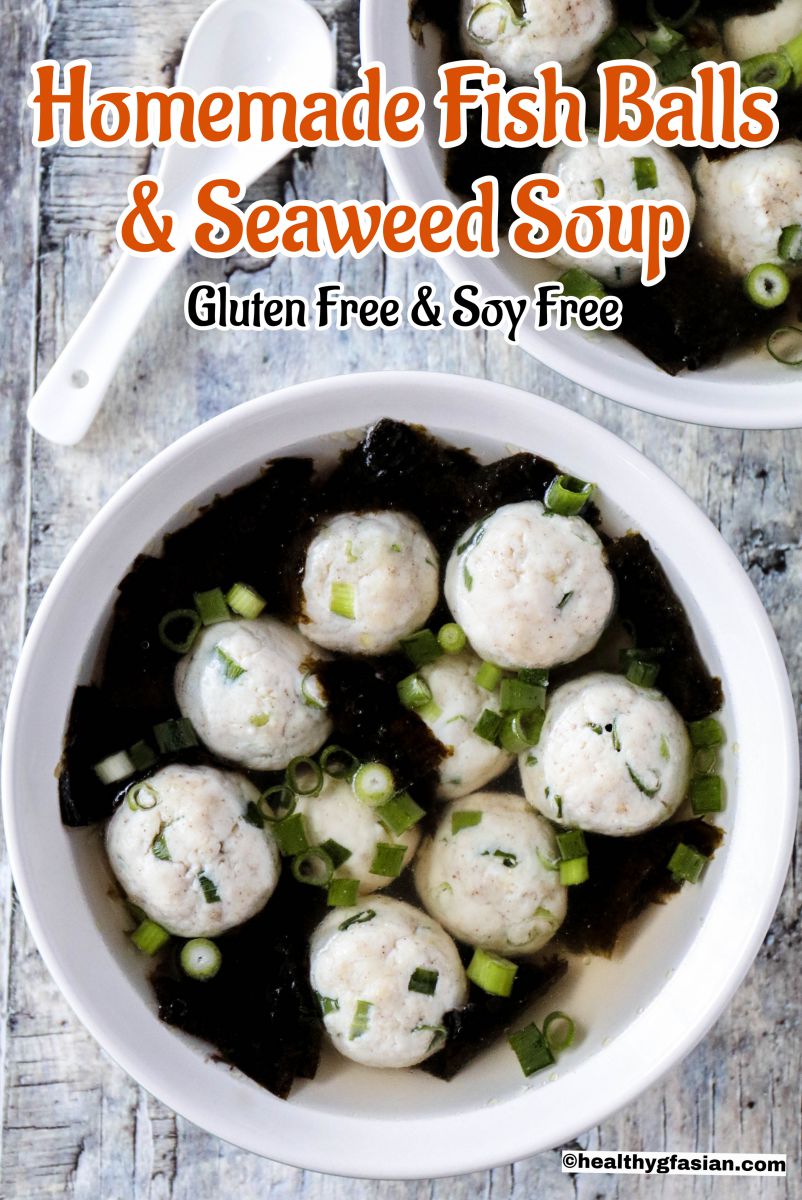
Versatility of Fish Balls
Fish balls are an extremely popular staple food in Chiu Chow and Fujian provinces of Southern China and Southeast Asia. They usually make fish balls with fish finely processed into fish paste and then shaped into balls and cakes. Fish balls are highly versatile, you can eat them as a main meal by itself, as an appetizer or snack. Besides you can use them as one of the main ingredients in soups and stir-fries. One of the most popular way of serving fish balls is in seaweed soup.
Moreover, they normally either deep fry, boil or steam the fish balls, when eating them plain by themselves. Some popular ways of consuming fish balls are with noodles, made into skewers, added to curry and hot pots. Besides, you can use fish balls as fillings for Stuffed Tofu (Yong Tau Foo) and even serve with rice. These various ways of serving fish balls are also popular street (hawker) food in Hong Kong, Malaysia and Singapore.
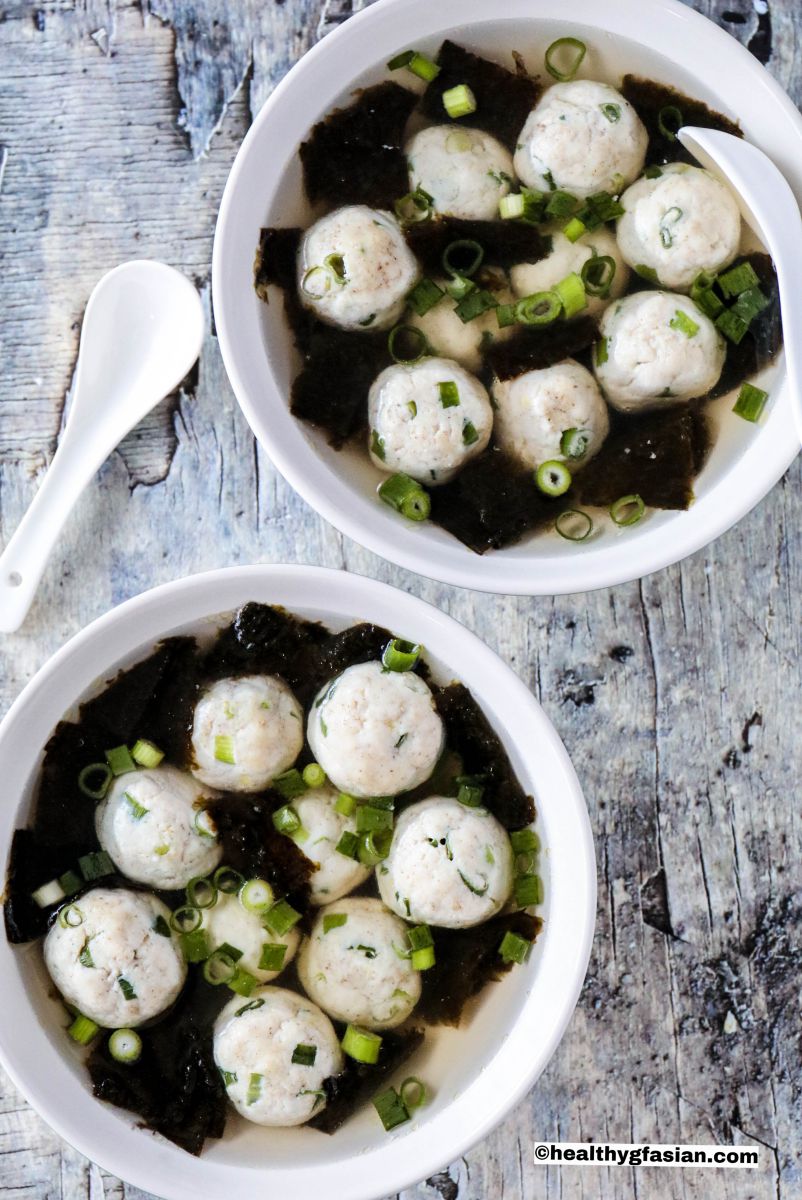
Types and Variations of Fish Balls
There are many variations of fish balls, they commonly use ingredients to stuff fish balls. Likewise, these ingredients include spring onion (shallots), garlic, onion, celery, pork, prawns and squid. One popular and traditional way of stuffing fish balls is with minced pork as fillings. They specifically call them “Fuzhou” fish balls. Typically, they use fish like redfish, cod, eels, yellow croaker and even Spanish mackerel to make fish paste. Followed by shaping the fish paste into fish balls or fish cakes. Furthermore, you can use other firm skinless white fish fillets like sea perch, snapper, blue eye, bream or ling.
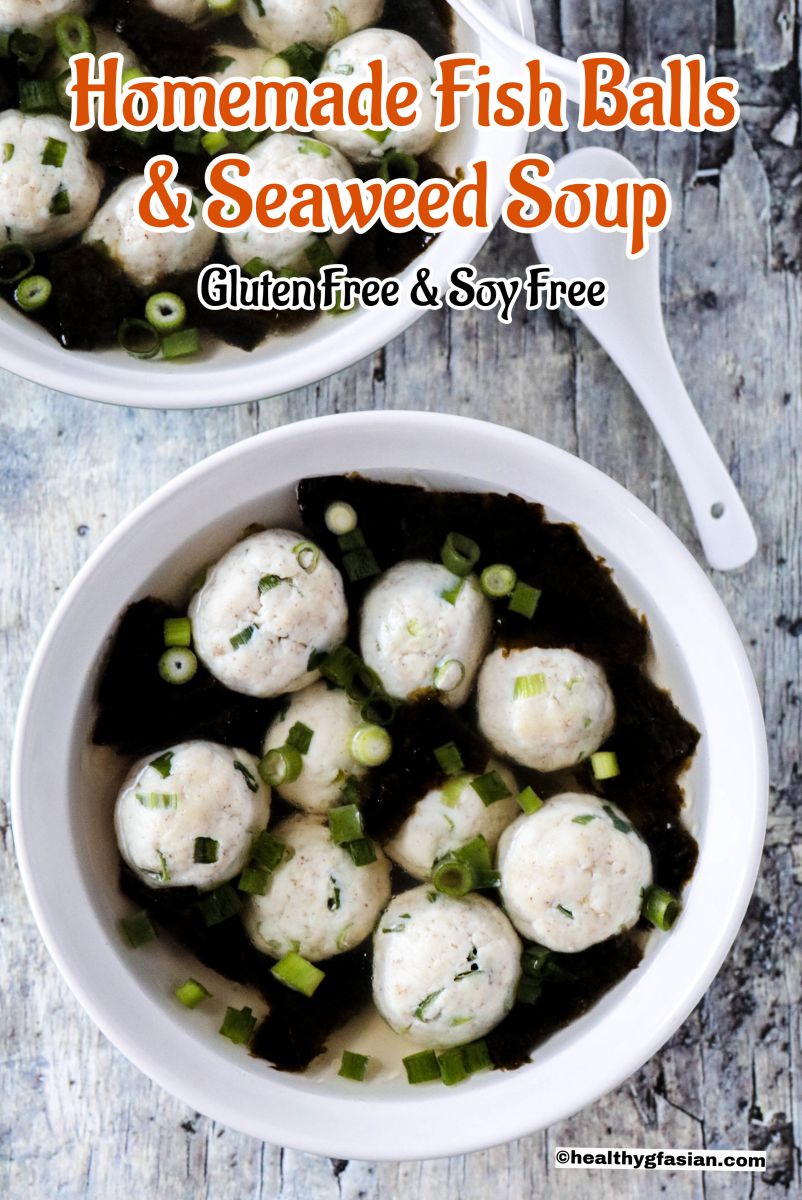
Health Benefits and Nutritional Values of Fish
The precise origin of fish balls is unknown but they have been a staple food in Chinese cuisine for ages. Besides, they definitely created fish balls during historical China during the Qing Dynasty. Moreover, fish balls like all seafood are high in protein and low in fats and calories. They are also relatively low in carbohydrates with substantial sources of vitamins and minerals. Likewise, redfish is a low to medium priced fish. Furthermore, it is rich in Omega-3 fatty acids and also an excellent source of essential minerals and vitamins. Specifically, potassium, phosphorus and vitamin B12. In addition, they are also a good source of calcium, iron and vitamin E.
The many health benefits of red fish may include:
- Lower risks of cardiovascular diseases and strokes;
- Reduce risks of inflammatory joint diseases like rheumatoid arthritis;
- Help improve blood circulation and decrease risks of blood clots like thrombosis;
- Promote healthy eyesight and lower risks of age-related macular degeneration (AMD);
- Support healthy skin;
- Reduce risks of dementia, Alzheimer’s and memory problems;
- Protect against inflammatory bowel disease like Crohn’s disease and ulcerative colitis; and
- Assist in the prevention of depression.
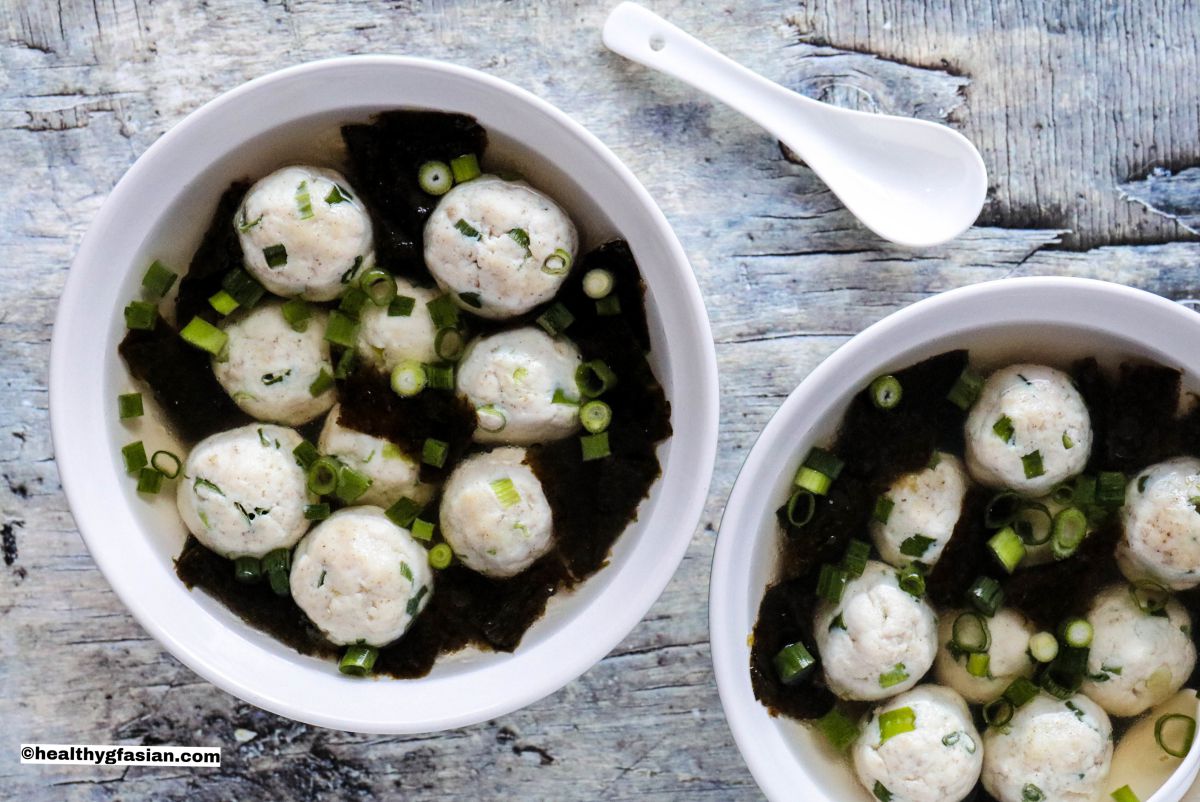
What is Seaweed?
Seaweed or sea vegetable has been an ingredient in Chinese, Japanese and Korean cuisines since ancient times. We have been using seaweed as food, fertilizer and livestock feeds since many thousands of years. It belongs to the edible seaweed species of the red algae species Porphyra. Edible seaweed is mostly marine algae and not fresh water algae which contains toxin. Commonly, Japanese call seaweed nori, zicai in China and gim or kim in Korea.
Likewise, they most frequently use seaweed as an ingredient in soups and to wrap sushi or onigiri (rice balls). And also as a garnish or condiment for several types of noodles and other dishes. They also grow seaweeds are for the extraction of polysaccharides such as agar agar (vegan gelatin). Nonetheless, seaweed plays an important role in ancient Chinese and Japanese medicines to help combat ailments and diseases.
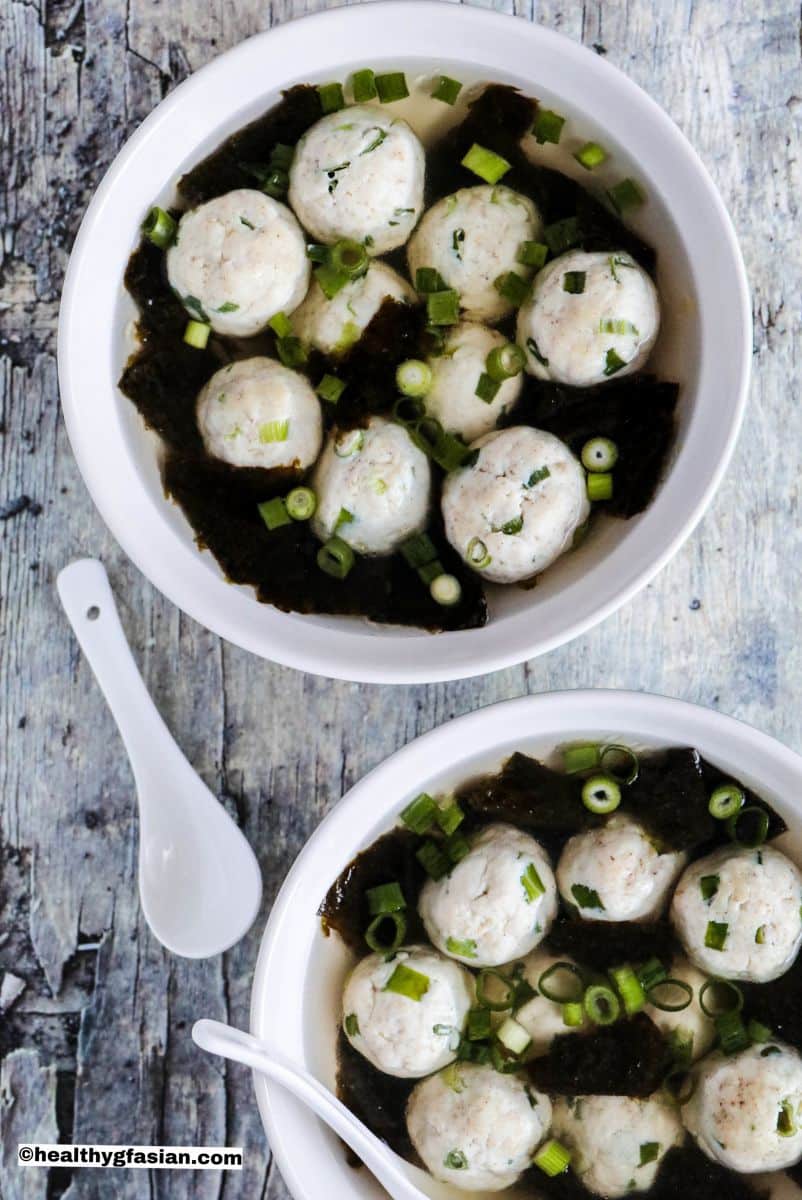
Health Benefits and Nutritional Values of Seaweed
Many people hail seaweeds as the new superfood as they are not only a rich source of antioxidant. But also high in fiber and protein but low in calories as well. In addition, they are also an excellent source of vitamins and minerals. Particularly, vitamin K, folate (vitamin B9), magnesium, manganese, iodine, sodium, calcium, potassium, iron and copper. They are also a good source of vitamins A, vitamin C, vitamin E, B group of vitamins, phosphorus, and choline. As well as omega-3 and omega-6 fatty acids.
In addition, seaweed is a superb source of iodine and it is a vital mineral for healthy thyroid function. Other good sources of iodine are seafood especially fish and shell fish like oysters, dairy products, eggs and iodised salt. Although iodine is essential for thyroid function, too little or too much will cause thyroid problems. Note that certain seaweed like brown algae namely kelp and kombu and dulse (red algae) have substantial amount of iodine. You should not be eat these types of seaweeds in large quantity or too regularly. Whereas spirulina (blue-green algae) contain only a very small amount of iodine. As a result, spirulina should not be the only source of iodine in the diet.
The overall health benefits of seaweed may include:
- Maintain healthy digestive system;
- Support healthy thyroid function;
- Lower risks of cardiovascular diseases;
- Help detox the body;
- Strengthen the immune system;
- Aid in weight loss;
- Reduce risks of cancer; and
- Lower risks of diabetes.
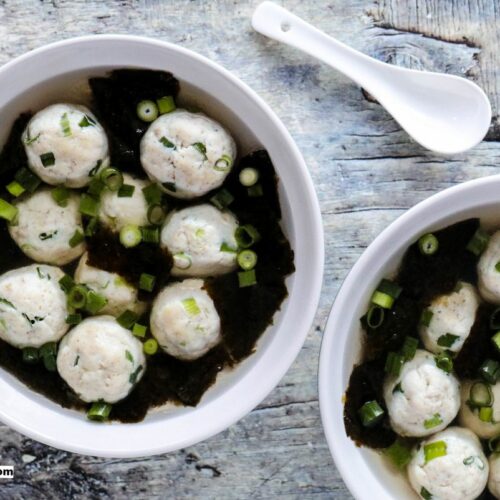
Homemade Fish Balls with Seaweed Soup
Ingredients
- 3 tablespoons extra virgin olive oil placed in a small bowl
- 1 kg skinless redfish fillets bones removed and cut into half. You can use any other firm skinless white fish fillets (sea perch, snapper, blue eye, bream or ling or Spanish mackerel)
- 6 spring onions (shallots) thinly sliced into 1cm lengthwise
- 1 teaspoons salt
- 1 teaspoons ground white pepper
- 4 nori seaweed sheets dried seaweed (10g/0.35oz each), cut into 2 inch pieces
For the Soup Base:
- 50 g dried anchovies
- 3 litres water
- 2 teaspoons salt
For the Garnish:
- 2 spring onions (shallots) thinly sliced into 1cm lengthwise
Instructions
For the soup base:
- Place 3 litres of water and the dried anchovies into a large stock pot. Bring to a boil.
- Turn the heat to low and simmer for 1 hour. Remove and discard all the anchovies.
For the fish balls:
- Place the redfish fillets into a food processor, and blend until you get a thick puree fish paste.
- Transfer to a large bowl and add in all the spring onions, ground white pepper and salt. Combine and mix well.
- Using hands lightly oiled with extra virgin olive oil, roll the fish paste into 1 inch round smooth balls.
- Cook the fish balls in the soup base for 5 minutes or until fish balls float to the top. Remove and set aside.
For the seaweed soup:
- Cook the cut seaweed pieces in the soup for 5 minutes or until just soft.
- Return the fish balls to the soup. Add 2 teaspoons salt or to taste.
- Garnish with some spring onions (shallots) and serve.
Recommended Products
Notes






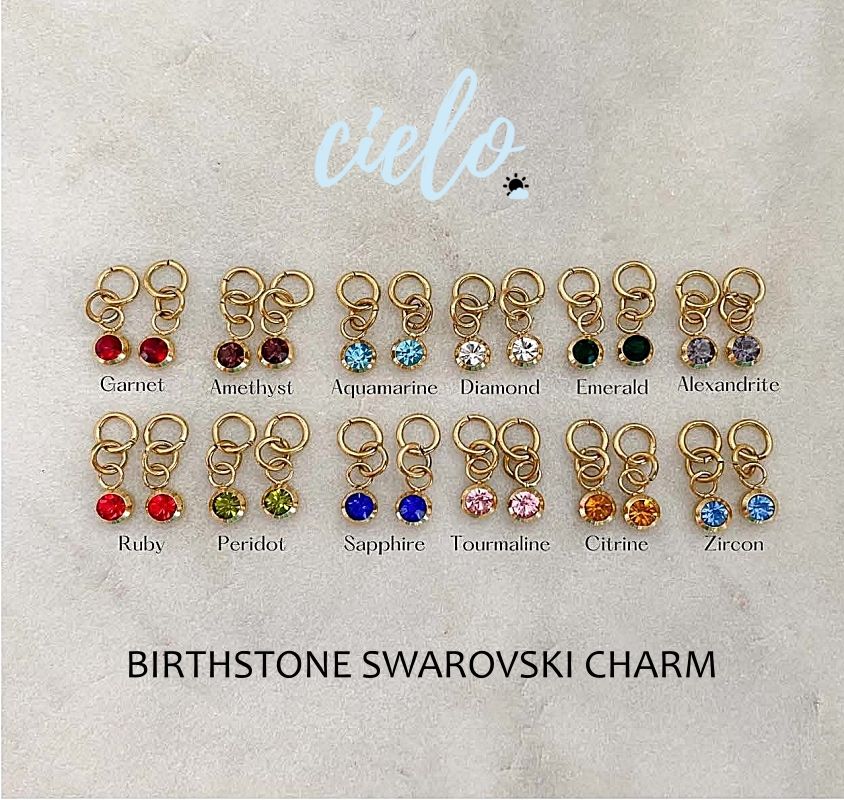
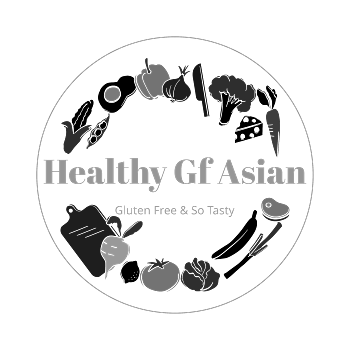
Thank you for this awesome looking and healthy recipe!
Thanks for leaving a nice comment. 🙂